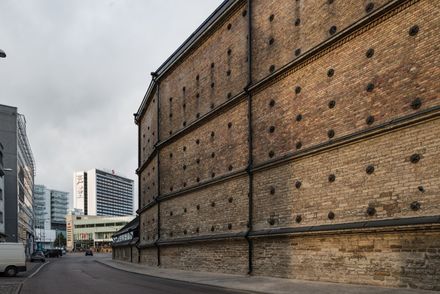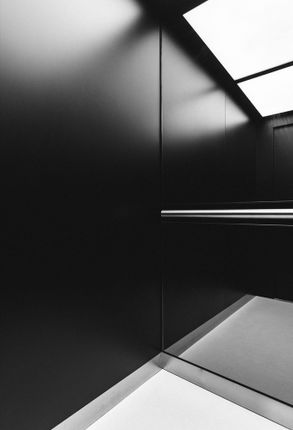
Rotermann Grain Elevator
ARCHITECTS
Koko Architects
CLIENT
Rotermann City OÜ
MANUFACTURERS HALLA
VELUX Group, Halla, Moodne Valgustus, Parmet, Windoor AS, Windoor Pty Ltd, XAL
AREA
5600.0 sqm
YEAR
2016
LOCATION
Tallinn, Estonia
CATEGORY
Office Buildings, Renovation
Text description provided by architect.
The Rotermann quarter is in a historically important location in the heart of Tallinn – between the Old Town, the harbour and Viru Square.
The roads to Tartu, Narva and Pärnu already intersected on Viru Square in the 19th century, making it Tallinn’s official central point.
The Rotermann quarter is packed with historical buildings almost as densely as the Old Town. Christian Abraham Rotermann, the owner of the enterprise Rotermann Factories, established in 1829, initiated the development of the compact industrial district.
Industry and trade in the quarter has seen both good times and bad. The Soviet years wrecked the buildings and during the uncertain years that followed the buildings became dilapidated so that repairs seemed impossible.
In 1979 the decaying district became the set for Andrei Tarkovsky’s world famous movie “Stalker”. The National Heritage Board designated the Rotermann quarter historically valuable in 2001, and so the old industrial buildings that have found a new function should coexist peacefully with high quality contemporary architecture.
The historic supervisory building in front of the grain elevator (Rotermanni 2) houses a restaurant. The roof of the building has been raised by one metre, thus appearing to hover. The aim was to let natural light enter and make it possible to use the second floor.
One of the most spectacular buildings in the Rotermann quarter, the grain elevator located on Hobujaama Street, was completed in 1904. The narrow building is over 100 metres long.
The longer sides have no windows, but instead the limestone facade of the building is accentuated by metal straps that reinforce the wall.
The wall is packed with metal details, like a useful old coat covered in buttons. The straps had the purpose of keeping the grain elevator walls intact even when the grain expanded.
Since the inner street side has openings that have been walled shut at various periods, the ground floor of the building houses business premises. The interiors of these rooms have preserved the old grain hoppers hanging from the ceilings.
An arcade that crosses the middle part of the building on the ground floor divides the space and creates an entrance to the inner street leading towards the centre of the district.
Dance studios are housed on the floor without windows and the attic provides offices with skylights that look out across the district and the Old Town.
2016 National Heritage Board of Estonia / recognition of exemplary heritage restoration / reconstruction project of Rotermann Grain Elevator




















